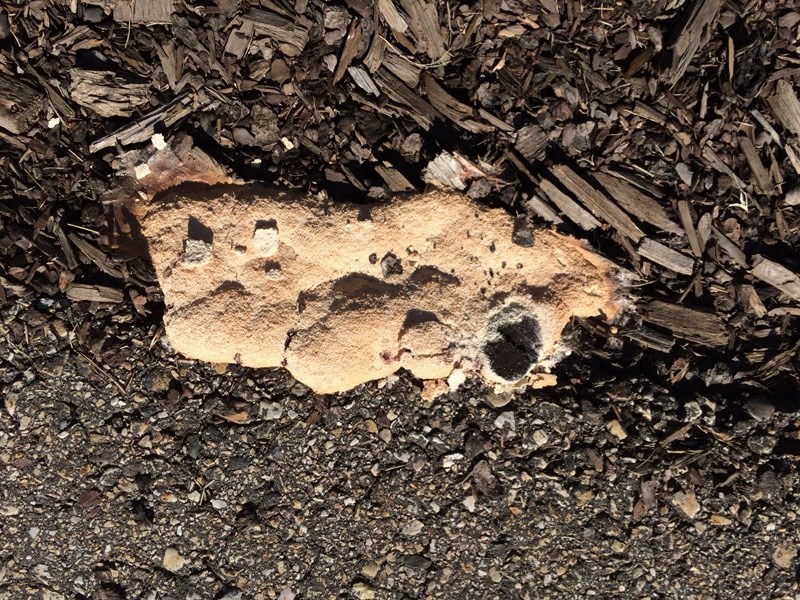The terrifying image of voracious goop engulfing and devouring its prey is the stuff of B-movie science fiction. The imaginations of horror flick lovers have been captivated and repulsed, at least since the 1958 B-movie classic The Blob, by the idea of such a horrific fate. The inspiration for that oozy monster, some say, could be a strange garden organism known as the slime mould.
Two varieties of slime mould that thrive locally in warm, damp mulch have names that make the very notion of slime even more disgusting. The dog vomit and the dog stinkhorn slime mould can turn up in rainy conditions like we’ve been experiencing for the past month.
Slime moulds, more animal than plant, are collections of single cells, similar to an amoeba, that thrive in warm, damp mulch, and like the fictitious blob, can actually move along the ground probing for edible bacteria.
St. Albert gardening expert Jim Hole says the dog vomit variety is appropriately named. The yellowish mass looks just like the aftermath of a canine’s digestive issues.
“People think it’s dog vomit. They try to wash it away, and it just spreads. You can’t eradicate it by watering it. If you have more mulch, you might cover it over. People always want to have it sprayed to get rid of it, but a spray doesn’t exist to get rid of it.”
The slime mould may look repulsive, but it is harmless and actually benefits the soil. It feeds on bacteria, “so the more bacteria populations there are, the more they can feed on,” Hole says.
“Just treat it as an interesting looking thing that’s in your yard,” says Hole.
The other slime mould you can find around St. Albert may seem even more offensive than the one just described. The dog stinkhorn resembles part of a male dog’s anatomy and emits a stench similar to rotting meat that attracts flies, which spread its spores.
These moulds will only appear in midsummer and only if conditions are ripe, as they have been this year.
Warm, moist conditions are also perfect for the appearance of lawn mushrooms. These mushrooms, unless they’re part of a fairy ring, perhaps, are as innocuous as slime mould and are also beneficial, Hole says. The fungus helps break down organic matter to produce fertile soil.
“If we didn’t have mushrooms, all the manure you put on the ground would stay as manure. It wouldn’t break down. All the stuff you use to enrich the soil would stay as it is. It wouldn’t enrich the soil,” Hole says.
If you can’t tolerate mushrooms on your lawn, knock the heads off when they’re young, before they’ve produced spores. But Hole believes that taking an interest in nurturing and protecting the natural environment should include appreciating elements in the environment that may have dubious aesthetic appeal.
“The thing about the mushrooms is that you almost have to convince people to enjoy them. If you have kids, get them interested in mushrooms.”
He thinks even slime mould deserves some respect.
“There’s this revulsion that people have, and they pass that on to their kids. It’s kind of a mixed message. You’re talking about the environment, and you’re getting so upset about something like a mushroom or certain insects showing up.
“You’re not doing your kids any favours. There certainly are pests in the garden that need to be controlled, but there are many, many things out there that are just there to observe and enjoy. And I include mushrooms and even slime mould in that. Slime mould is a cool, odd looking organism.”
Before the morning I talked to Jim Hole about slime mould, I’d never seen any. On my walk that afternoon on the south side of Edmonton, in the mulch along the path, I spotted a pinkish mass. Hole confirmed that I had seen my first patch of dried dog vomit slime mould.



